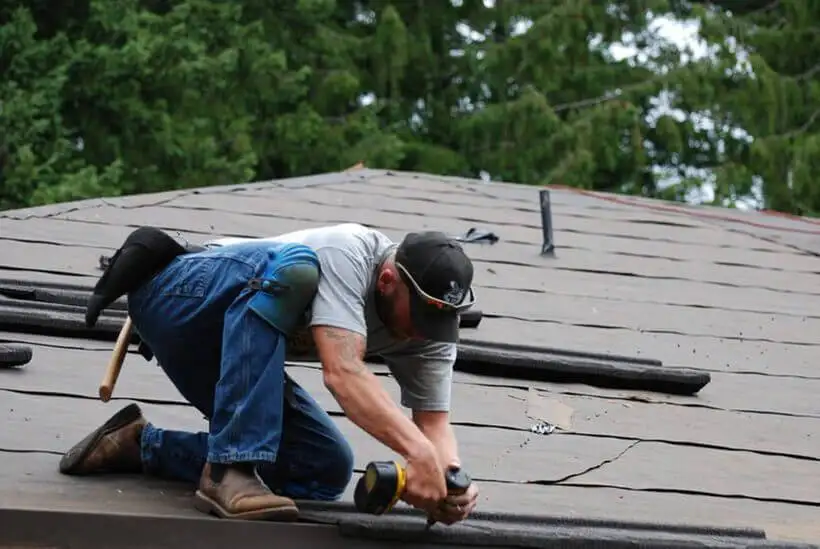
In an era where extreme weather events are becoming increasingly common, the importance of storm-proofing your roof cannot be overstated. Your roof is the primary shield against the elements, and its integrity determines how well your home can withstand nature’s fury. Ignoring the need to prepare your roof for storms can lead to devastating consequences, from minor leaks to catastrophic structural failures. This guide aims to provide you with comprehensive insights into ensuring your roof is ready for whatever Mother Nature throws its way.
1. Roof Inspection and Maintenance
The first step in storm-proofing is regular roof inspection. Over time, roofs can develop vulnerabilities like cracks, loose tiles, or worn-out shingles. Identifying these weak spots early can prevent minor issues from escalating into major problems during a storm. Think of it as a health check-up for your home; just as you wouldn’t ignore a persistent cough, you shouldn’t overlook the smallest signs of roof damage. Addressing these issues promptly ensures that when the storm hits, your roof is in its best shape to protect your home.
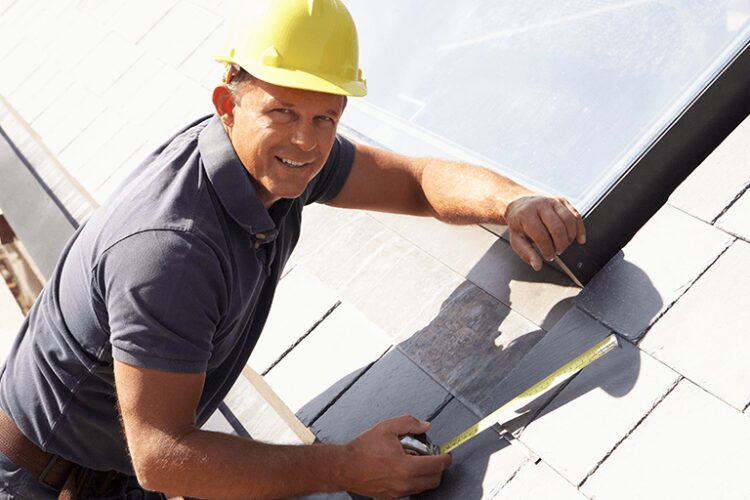
2. Reinforce Roof Structure
A strong foundation is key to any structure’s longevity, and your roof is no exception. Strengthening roof trusses and framing enhances its structural integrity, making it more resilient against powerful winds and heavy rainfall. While some homeowners might be tempted to reinforce their roofs themselves, seeking professional assistance ensures that weak areas prone to damage are adequately addressed. Remember, a fortified roof structure is a long-term investment in your home’s safety.
3. Secure Loose Roofing Materials
Loose shingles, tiles, or metal sheets can become lethal projectiles during storms. Not only can they cause damage to your property, but they also pose a significant risk to nearby homes and pedestrians. Regularly inspect your roofing materials, ensuring they are securely fastened. If you notice any loose or damaged sections, repair or replace them immediately. This proactive approach can prevent further damage and ensure your roof remains intact during extreme weather.
4. Install Impact-Resistant Roofing Materials
When it comes to safeguarding your home, consider the immense benefits of upgrading to impact-resistant shingles, tiles, or metal roofing which are essential part of every roof repair. Specifically engineered to endure the brutal force of hailstones, the onslaught of flying debris, and other storm-induced hazards, these materials stand as a formidable barrier against nature’s wrath. While the upfront cost of these advanced materials might be steeper compared to conventional roofing options, the long-term dividends they pay in terms of reduced maintenance expenses, enhanced durability, and a boost in property value make the investment a prudent choice for the discerning homeowner.
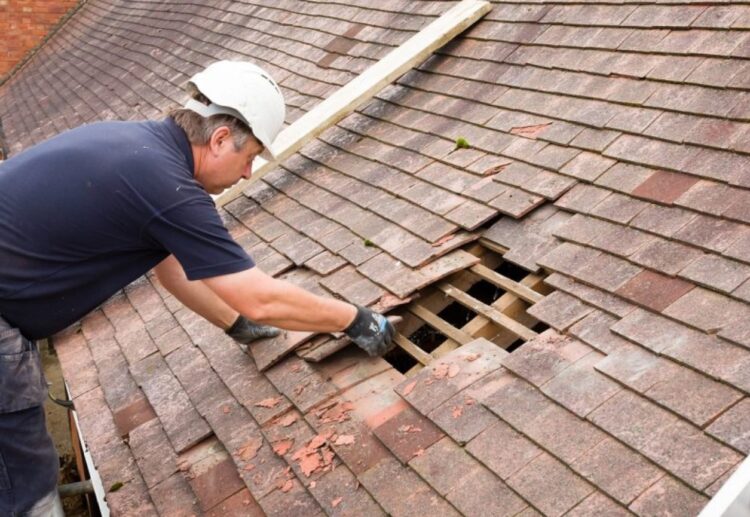
5. Maintain Gutters and Drainage
The significance of a well-maintained gutter system is often underestimated. These channels play a pivotal role in efficiently directing rainwater away from your home, ensuring its foundation remains uncompromised. Gutters choked with leaves, twigs, or other debris can become a breeding ground for water stagnation, leading to unsightly leaks and potential structural damage. It’s imperative to routinely inspect and clean your gutters, ensuring unobstructed flow. Furthermore, pay special attention to downspouts, ensuring they channel water a safe distance from your home’s foundation, thereby mitigating the risk of flooding or erosion.
6. Trim Overhanging Branches
While trees undoubtedly enhance the aesthetic appeal of our properties, their overhanging branches can be a latent threat, especially during turbulent weather. In the throes of a storm, these branches, weakened or dead, can snap, plummeting onto your roof or even power lines, leading to extensive damage or power outages. It’s wise to periodically inspect trees in close proximity to your home, pruning branches that loom dangerously over structures. This proactive approach not only fortifies your home’s defenses but also contributes to the tree’s health, promoting robust growth.
7. Seal Roof Penetrations
A roof is more than just a protective canopy; it often houses various penetrations like chimneys, vents, and skylights. These openings, if not sealed meticulously, can become gateways for water, especially during torrential downpours. It’s paramount to ensure that these vulnerable spots are sealed with top-tier sealants, designed to endure the harshest of weather conditions. A well-sealed roof not only offers a robust defense against potential leaks but also bolsters your home’s insulation, leading to more efficient heating and cooling.
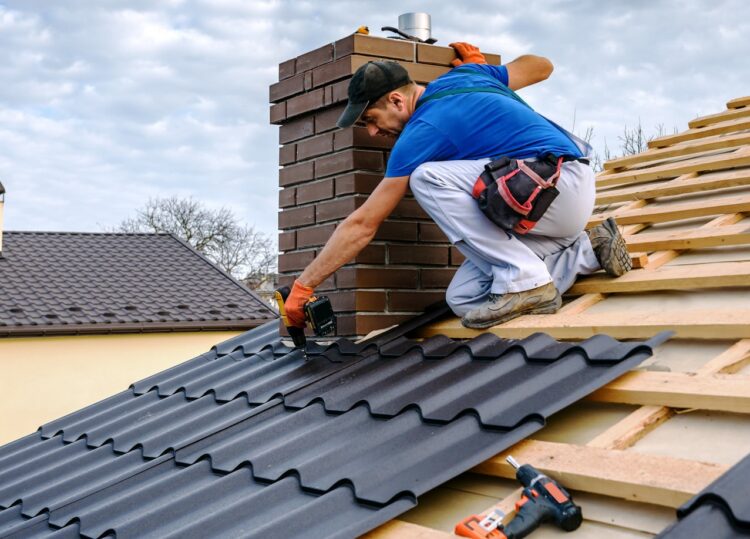
8. Install Hurricane Straps
For those residing in regions frequently battered by hurricanes, the installation of hurricane straps is non-negotiable. These robust metal connectors serve to anchor the roof securely to the main structure, drastically reducing the likelihood of it being torn off by ferocious winds. By ensuring the roof remains firmly in place, these straps act as a formidable line of defense, safeguarding your home and its inhabitants from the devastating effects of extreme weather phenomena.
9. Consider Roof Coatings
In the quest for enhanced roof protection, coatings emerge as a potent ally. These specialized solutions, when applied, form a protective shield against both water seepage and harmful UV radiation. By sealing potential weak points, they effectively prevent leaks, prolonging the roof’s operational lifespan. Among the myriad of options, reflective coatings deserve special mention. These variants, by deflecting sunlight, play a pivotal role in reducing heat absorption, rendering interiors cooler and slashing energy bills.
10. Emergency Preparedness Kit
Even with meticulous preparations, the unpredictable nature of storms means emergencies can still manifest. It’s prudent to always have an emergency roof repair kit within arm’s reach. This kit, a veritable arsenal for quick fixes, should be stocked with essentials like durable tarps, sturdy nails, a reliable hammer, and a potent sealant. Armed with these tools, homeowners can swiftly address minor damages, staving off their escalation into more severe issues.
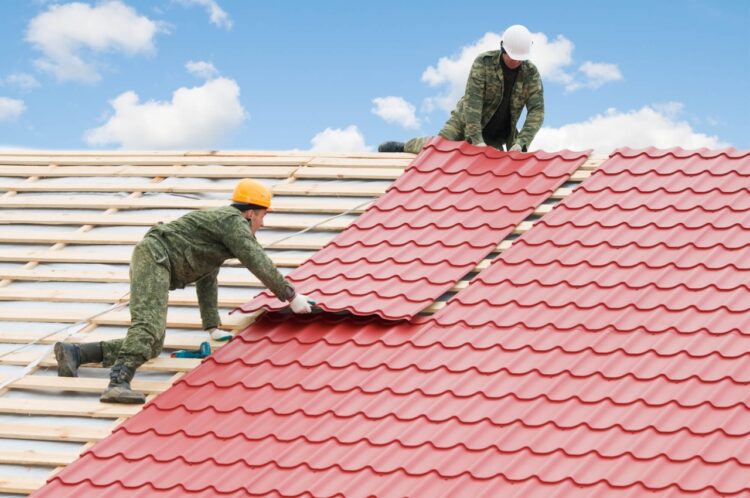
11. Professional Roof Inspection
While there’s merit in DIY roof inspections, the nuanced expertise of a seasoned professional is unparalleled. Entrusting a professional with the task of inspecting your roof ensures that even the most concealed vulnerabilities are unearthed and promptly addressed. Their vast experience, coupled with specialized tools, equips them to offer insights and recommendations that can be pivotal in fortifying your roof against the looming threat of storms.
12. Engage in Regular Maintenance
The key to a storm-proof roof lies in regular maintenance and proactive measures. By following the steps outlined in this guide, homeowners can ensure their roofs are well-equipped to handle extreme weather. Remember, a well-maintained roof not only protects your home but also provides peace of mind, knowing that you’ve done everything possible to safeguard your sanctuary against the elements.







